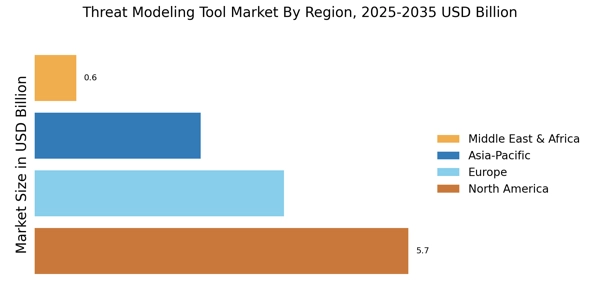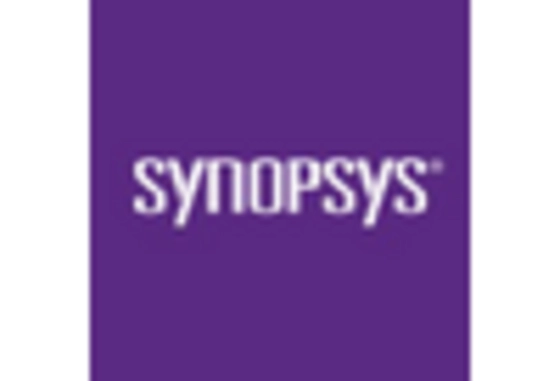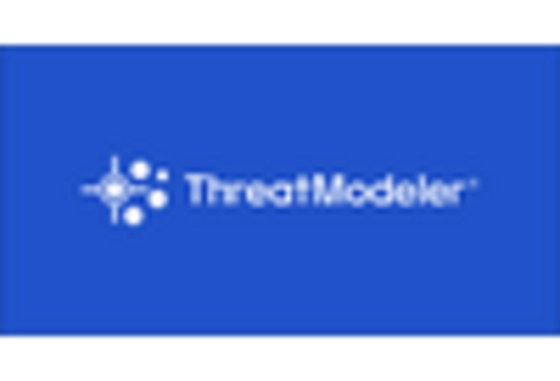Increased Cybersecurity Threats
The rise in cybersecurity threats has become a pivotal driver for the Threat Modeling Tool Market. Organizations are increasingly recognizing the necessity of identifying vulnerabilities before they can be exploited. In 2025, it is estimated that cybercrime will cost businesses over 10 trillion dollars annually, underscoring the urgency for effective threat modeling solutions. As cyber threats evolve in sophistication, the demand for tools that can anticipate and mitigate these risks is likely to surge. This trend indicates that companies are prioritizing investments in threat modeling to safeguard their assets and maintain customer trust. Consequently, the Threat Modeling Tool Market is expected to experience substantial growth as organizations seek to enhance their security postures.
Growing Adoption of Cloud Services
The accelerated adoption of cloud services is significantly influencing the Threat Modeling Tool Market. As businesses migrate to cloud environments, they face unique security challenges that necessitate robust threat modeling strategies. According to recent data, over 80% of enterprises are expected to utilize cloud services by 2025, creating a pressing need for tools that can effectively assess and manage risks associated with cloud deployments. This shift towards cloud computing not only amplifies the complexity of security but also drives the demand for specialized threat modeling tools that can address these challenges. As a result, the Threat Modeling Tool Market is poised for growth as organizations seek to ensure the security of their cloud infrastructures.
Regulatory Compliance and Standards
The increasing emphasis on regulatory compliance is a significant driver for the Threat Modeling Tool Market. Organizations are compelled to adhere to various regulations, such as GDPR and HIPAA, which mandate stringent security measures. In 2025, it is projected that compliance-related expenditures will reach unprecedented levels, prompting businesses to invest in threat modeling tools that facilitate adherence to these regulations. The need for comprehensive threat assessments to meet compliance requirements is likely to propel the demand for effective modeling solutions. This trend suggests that the Threat Modeling Tool Market will continue to expand as organizations prioritize compliance-driven security measures.
Integration of Advanced Technologies
The integration of advanced technologies, such as artificial intelligence and machine learning, is reshaping the Threat Modeling Tool Market. These technologies enhance the capabilities of threat modeling tools, enabling organizations to analyze vast amounts of data and identify potential threats more efficiently. By 2025, it is anticipated that the market for AI-driven security solutions will witness substantial growth, further driving the demand for sophisticated threat modeling tools. The ability to leverage advanced analytics for proactive threat identification positions organizations to stay ahead of emerging risks. Consequently, the Threat Modeling Tool Market is likely to benefit from the increasing incorporation of these technologies into security frameworks.
Rising Awareness of Cybersecurity Best Practices
The growing awareness of cybersecurity best practices among organizations is a crucial driver for the Threat Modeling Tool Market. As businesses recognize the importance of proactive security measures, there is a heightened focus on implementing effective threat modeling strategies. Educational initiatives and industry collaborations are fostering a culture of security awareness, leading to increased investments in threat modeling tools. In 2025, it is expected that organizations will allocate a larger portion of their budgets to cybersecurity, further propelling the demand for threat modeling solutions. This trend indicates that the Threat Modeling Tool Market will continue to thrive as organizations strive to adopt best practices in cybersecurity.


















Leave a Comment